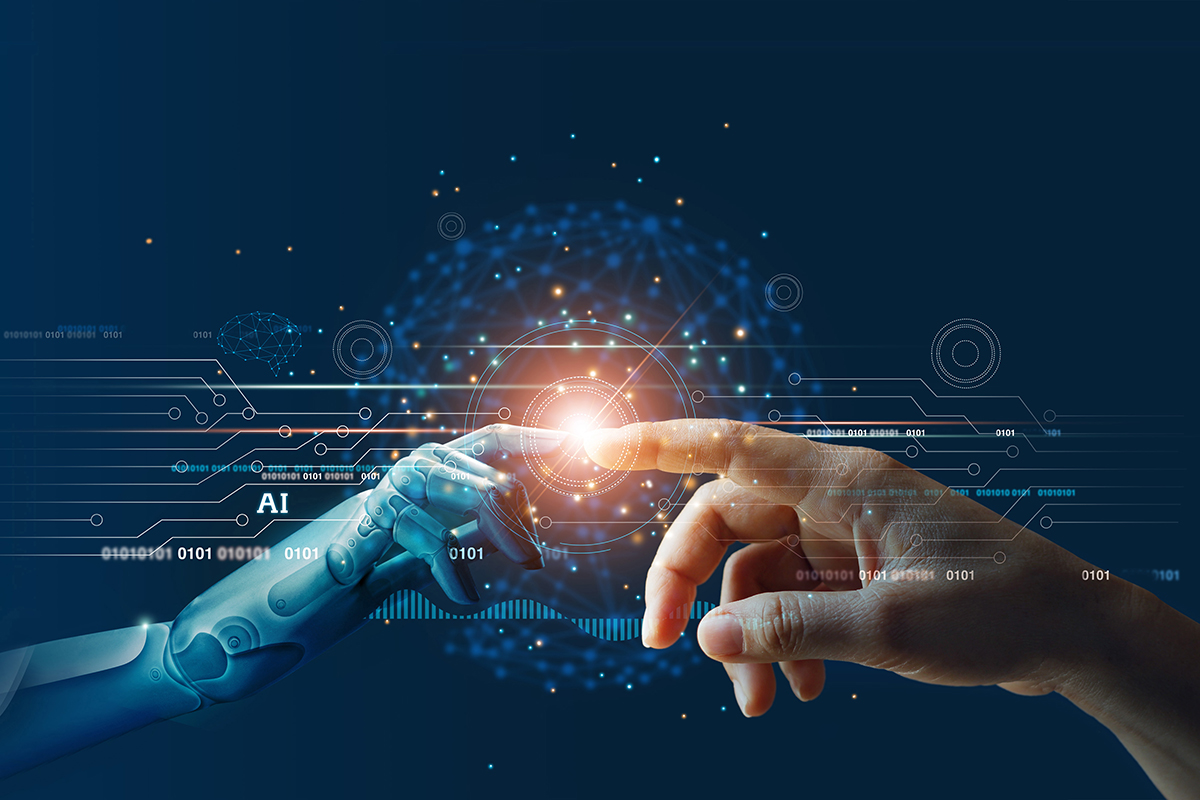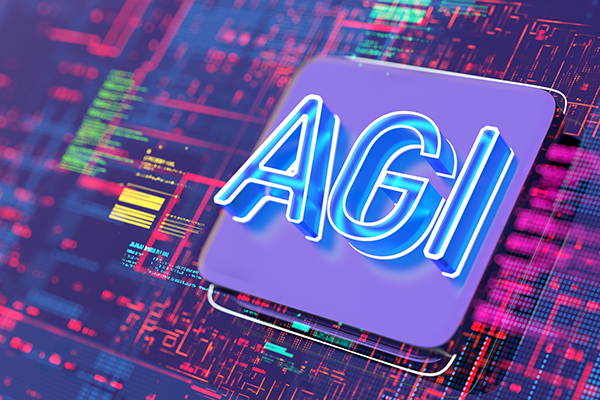Artificial intelligence (AI) has radically transformed our technological environment, but we are now on the threshold of a new breakthrough: artificial general intelligence (AGI). Although it initially seemed like a science fiction concept, AGI is starting to become a tangible reality. In this post, we will explore what AGI actually entails, how it differs from traditional AI, and the challenges it faces in its development.
Artificial general intelligence: beyond conventional AI
Artificial general intelligence aims to create systems with human-like cognitive capabilities and the capacity for self-learning. Unlike conventional AI, which specializes in specific, defined tasks, AGI seeks to develop systems capable of learning and solving problems in a variety of domains without constant human intervention.
For example, current AI systems, such as image recognition systems, are designed for specific tasks and cannot adapt to new situations. In contrast, AGI would have the ability to acquire new skills and tackle complex problems in unexpected contexts. This breakthrough would be a quantum leap from traditional AI, which still requires extensive adjustments to perform tasks outside its specific scope.
Understanding the differences
In the field of artificial intelligence, it is essential to distinguish between strong AI and weak AI. Strong AI, or AGI, possesses broad cognitive capabilities and can perform complex tasks without requiring domain-specific knowledge. This type of AI represents the ultimate goal of research and could revolutionize ICT by enabling machines not only to execute tasks, but also to understand and adapt their behavior to various situations.
On the other hand, weak AI is designed for specific tasks and cannot transfer its capabilities to other domains without additional training. Despite advances in generative AI and large language models (LLMs), these systems remain examples of weak AI, as they lack the flexibility to adapt to new situations without human intervention.
Theoretical Approaches to AGI Development
The development of AGI requires a combination of theoretical approaches and innovative technologies. The following are some of the most promising approaches:
- Symbolic approach: uses logical networks to represent human thoughts. Although useful for interpreting complex ideas, its ability to replicate subtle cognitive abilities, such as perception, is limited.
- Connectionist approach: Replicates the structure of the human brain through neural networks, being effective in the development of basic cognitive abilities, such as understanding natural language.
- Universalist approach: Seeks solutions at the computational level that can be applied in practical AGI systems.
- Whole organism architecture: Proposes to integrate AI models with a physical representation of the human body, suggesting that physical interaction is crucial to achieve complete AGI.
- Hybrid solution: Combines symbolic and subsymbolic approaches to develop AGI that takes advantage of the best of both worlds.

Key technologies for the development of AGI
Although AGI is still under development, several emerging technologies are laying the groundwork for its advancement:
- Deep learning: trains multi-layered neural networks to understand complex relationships in large volumes of data. It is fundamental to AGI, enabling it to handle diverse types of information.
- Generative AI: Enables systems to create unique and realistic content. This capability is essential for AGI, which needs to generate new ideas and solutions.
- Natural Language Processing (NLP): Facilitates the understanding and generation of human language, a crucial skill for any AGI system.
- Computer Vision: Allows the interpretation and analysis of visual information, which is key for applications in autonomous robotics.
- Robotics: The integration of AI with robotic components will enable AGI to physically interact with its environment, a vital step towards human-like intelligence.
Challenges on the road to AGI
The development of AGI presents significant challenges. One of the biggest hurdles is the ability to connect knowledge from different domains, a task that humans naturally perform but that current AIs cannot replicate without specific training. In addition, the lack of emotional intelligence and creativity, as well as the need to advance sensory perception and physical interaction, are areas that must be developed before fully functional AGI can be achieved.
Prepare for the future of ICT
Artificial general intelligence has the potential to revolutionize information and communication technologies. Although we are still far from achieving fully functional AGI, current advances are bringing us closer to this goal. For ICT professionals and students, understanding these concepts and challenges is crucial to keep up with trends and prepare for a future in which machines will be able to think, learn and adapt like humans.
If you are interested in being part of this technological revolution, consider an academic program in Data Science Applied to Business Intelligence. This program will provide you with the tools you need to understand and address the challenges of AGI, positioning you at the forefront of a field that is destined to transform our lives and the ICT industry. Find out more about the program and take the next step in your career.
Boost your career
Artificial general intelligence is about to revolutionize ICT. To be at the forefront and prepared for the challenges ahead, a master’s in Strategic Management with a specialty in Information Technology is key. This program will give you the tools you need to understand and lead in the field of emerging technologies, such as generative AI and deep learning. Take advantage of this opportunity to boost your career and be at the forefront of technological innovation. Learn more about the program here.
Sources:

